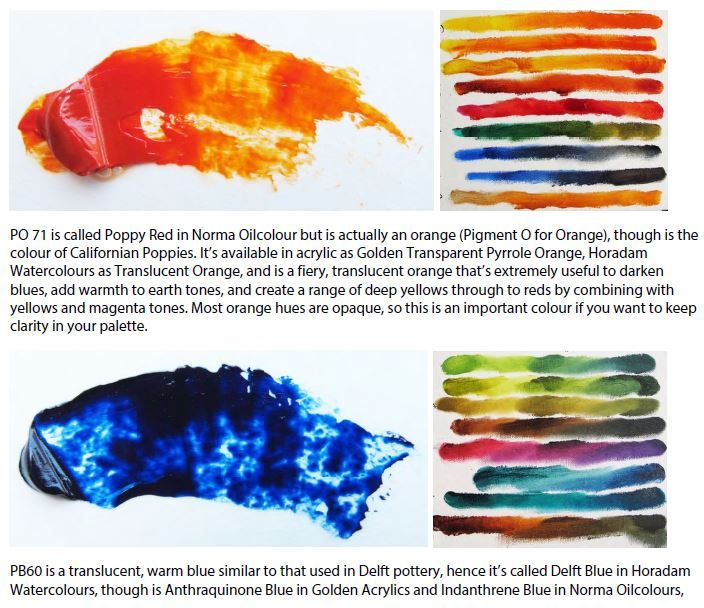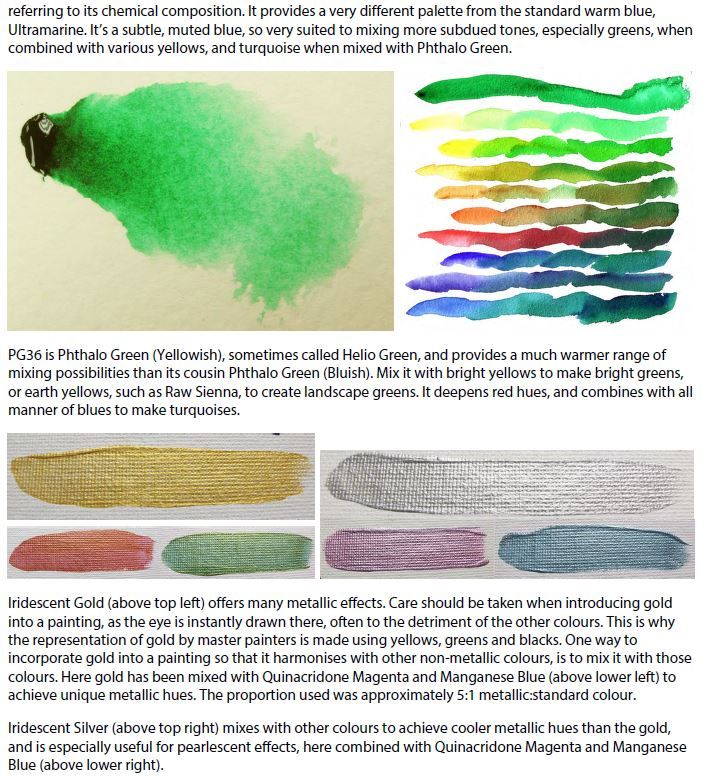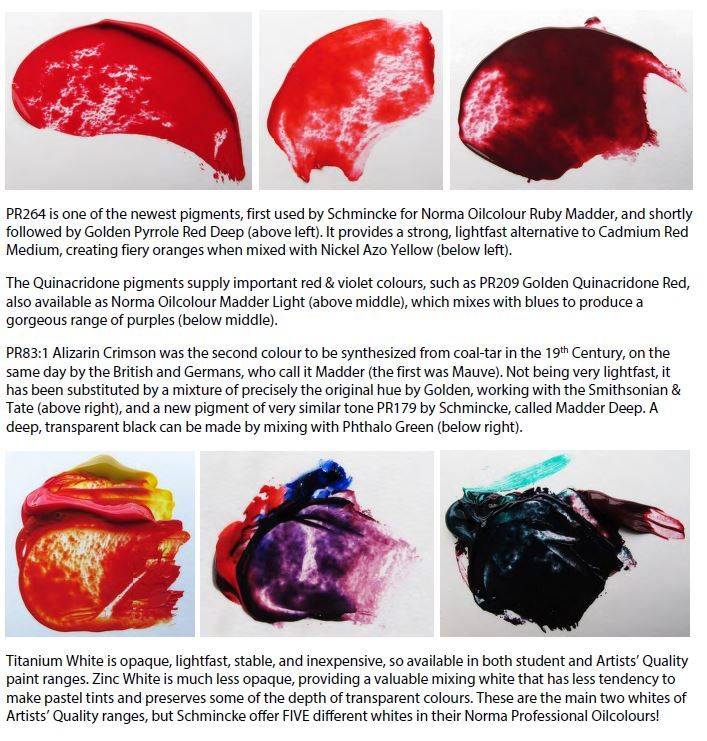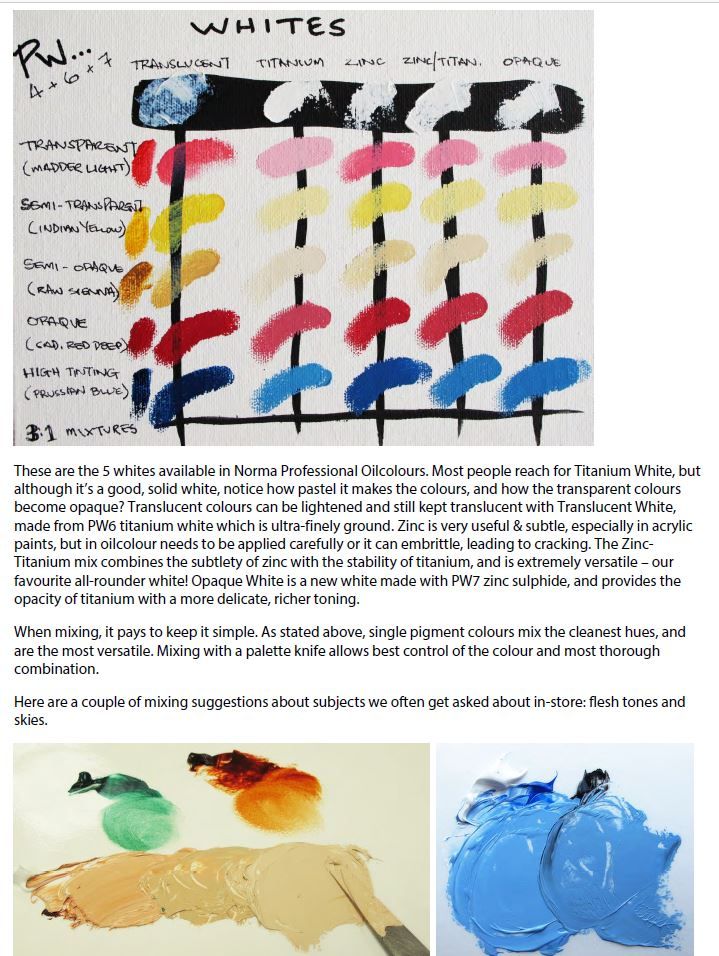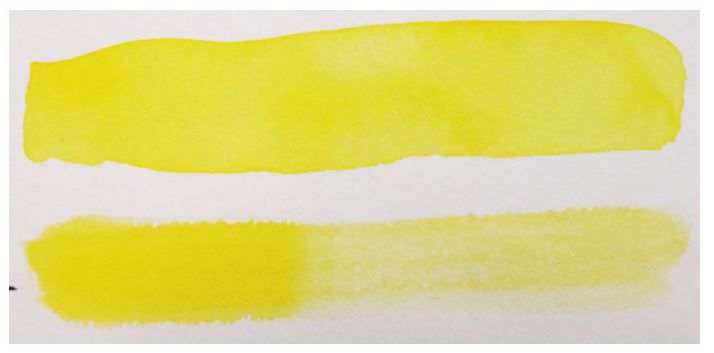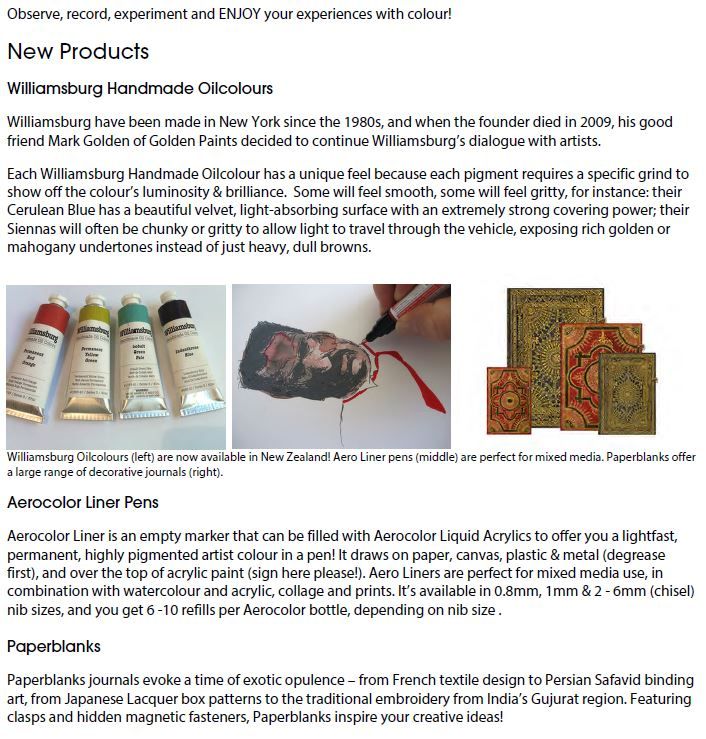Shop Now
-
ACRYLIC PAINTS & MEDIUMS
- Specials
- New Arrivals
- Featured
- Clearance
- ART SPECTRUM ACRYLIC MEDIUMS
- ART SPECTRUM COLOURFIX PRIMER
- ATELIER MEDIUMS
- AUREUO ACRYLIC PAINT SETS
- CHROMACRYL MEDIUMS
- CHROMACRYL STUDENT ACRYLIC
- DERIVAN MEDIUMS
- DERIVAN STUDENT ACRYLIC PAINT
- EXPRESSION PAINTING SETS
- FLASHE
- FLUID WRITER PENS
- GOLDEN FLUID ACRYLIC
- GOLDEN HEAVY BODY ACRYLIC
- GOLDEN HIGH FLOW ACRYLIC
- GOLDEN MEDIUMS & VARNISHES
- GOLDEN OPEN ACRYLIC
- GOLDEN SOFLAT MATTE ACRYLIC
- MATISSE BACKGROUND
- MATISSE MEDIUMS
- MATISSE STRUCTURE
- NAM VARNISHES
- PEBEO ACRYLIC MEDIUMS
- PEBEO ORIGIN ACRYLIC
- PEBEO STUDIO ACRYLIC
- SCHMINCKE ACRYLIC MEDIUMS
- SCHMINCKE AEROCOLOR ACRYLIC
- SCHMINCKE AKADEMIE ACRYLIC
- WINSOR & NEWTON ACRYLIC MEDIUMS
- WINSOR & NEWTON ARTISTS ACRYLIC
- AIRBRUSHES
- ART ACCESSORIES
- ART BAGS, PORTFOLIOS & PRESENTATION
- BOARD & CARD
-
BOOKS
- New Arrivals
- BOOKS ACRYLIC PAINTING
- BOOKS ARCHITECTURE
- BOOKS ART AND CRAFT KITS
- BOOKS CHARACTER DESIGN
- BOOKS COLOUR THEORY
- BOOKS COLOURING BOOKS
- BOOKS CREATIVE KIDS
- BOOKS DRAWING
- BOOKS FASHION & TEXTILES
- BOOKS FIGURE DRAWING
- BOOKS FLORA AND FAUNA
- BOOKS GRAPHIC DESIGN
- BOOKS HAND LETTERING
- BOOKS ILLUSTRATION
- BOOKS KAWAII
- BOOKS LOGO DESIGN
- BOOKS MANGA
- BOOKS MIXED MEDIA
- BOOKS MONOGRAPHS
- BOOKS MOTIVATIONAL
- BOOKS NZ AOTEAROA ART
- BOOKS OIL PAINTING
- BOOKS ORIGAMI
- BOOKS PACKAGING DESIGN
- BOOKS PAPER ARTS
- BOOKS PHOTO TECHNIQUES
- BOOKS PHOTOGRAPHY
- BOOKS PRINTMAKING
- BOOKS PRODUCT DESIGN
- BOOKS PUZZLES AND GAMES
- BOOKS SCULPTURE AND CLAY
- BOOKS STREET ART
- BOOKS TYPOGRAPHY
- BOOKS URBAN SKETCHING
- BOOKS WATERCOLOUR PAINTING
-
BRUSHES & PALETTE KNIVES
- Specials
- New Arrivals
- Featured
- Clearance
- BAMBOO BRUSHES
- BRUSH SOAP & CLEANERS
- BRUSH STANDS & STORAGE
- COLOUR SHAPERS
- DA VINCI BLACK SABLE BRUSHES
- DA VINCI BRISTLE BRUSHES
- DA VINCI BRUSH SETS
-
DA VINCI CASANEO WATERCOLOUR BRUSH
- DA VINCI CASANEO FLAT BRUSH
- DA VINCI CASANEO LINER BRUSH
- DA VINCI CASANEO MINI BRUSHES
- DA VINCI CASANEO MOTTLER
- DA VINCI CASANEO OVAL BRUSH
- DA VINCI CASANEO POCKET TRAVEL BRUSH
- DA VINCI CASANEO RIGGER BRUSH
- DA VINCI CASANEO ROUND BRUSH
- DA VINCI CASANEO SHORT STROKE BRUSH
- DA VINCI CASANEO SLANT EDGE BRUSH
- DA VINCI CASANEO WASH BRUSH
- DA VINCI CHUNEO SYNTHETIC BRISTLE BRUSHES
- DA VINCI COLINEO OIL & ACRYLIC LONG HANDLED BRUSHES
- DA VINCI COLINEO WATERCOLOUR BRUSHES
- DA VINCI COSMOTOP MIX BRUSHES
- DA VINCI COSMOTOP NOVA BRUSHES
- DA VINCI COSMOTOP SPIN BRUSHES
- DA VINCI COSMOTOP WASH BRUSHES
- DA VINCI DRY BRUSHES SYNTHETIC
- DA VINCI FORTE BRUSHES
- DA VINCI IMPASTO BRUSHES
- DA VINCI JUNIOR SYNTHETIC BRUSHES
-
DA VINCI KOLINSKY RED SABLE BRUSHES
- DA VINCI ARTIST COLLECTION GRIS BRUSH
- DA VINCI KOLINSKY SABLE WATERCOLOUR BRUSH SERIES 36
- DA VINCI LETTERING BRUSH POINT
- DA VINCI MAESTRO KOLINSKY SABLE WATERCOLOUR BRUSH SERIES 11
- DA VINCI MAESTRO KOLINSKY SABLE WATERCOLOUR BRUSH SERIES 35
- DA VINCI MAESTRO MINIATURE BRUSHES
- DA VINCI RED SABLE POCKET TRAVEL BRUSH
- DA VINCI LETTERING BRUSHES
- DA VINCI MAESTRO2 BRISTLE BRUSHES
- DA VINCI MICRO BRUSHES
- DA VINCI SPECIAL BRUSHES
- DA VINCI SQUIRREL/WASH BRUSHES
- DA VINCI STUDENT BRUSHES
- DA VINCI TOP-ACRYL BRUSHES
- ESSDEE SPONGE ROLLERS
- EXPRESSION BRUSHES
- JASART 577 ETERNA BRUSH
- JASART HOG BRISTLE BRUSHES
- JASART MOP & STENCIL BRUSHES
- PALETTE KNIVES
- PEBEO BRUSH SETS
- PEBEO IRIS BRUSHES
- PEBEO MOTTLER BRUSHES
- WINSOR & NEWTON COTMAN WATERCOLOUR BRUSHES
- WINSOR & NEWTON GALERIA BRUSHES
- WINSOR & NEWTON SCEPTRE GOLD BRUSHES
- WINSOR & NEWTON SERIES 7 BRUSHES
- WINSOR & NEWTON WINTON BRUSHES
-
CANVAS & PANELS
- Specials
- CANVAS ROLLS
- CANVAS STRETCHING TOOLS
- CEDAR STRETCHER BARS
- EXPRESSION CANVAS PANELS
- EXPRESSION FLOATING CANVAS FRAMED
- EXPRESSION STRETCHED CANVAS
- FREDRIX STRETCHED CANVAS, PANELS, PADS
- MUSEO LINEN CANVAS
- MUSEUM STRETCHED CANVAS
- NAM NATURAL LINEN CANVAS
- NAM ROUND CANVAS PANELS
- PINE STRETCHER BARS & BRACES
- PRO-PANELS
- SKATEBOARD DECK ART BOARD
- STRETCHED WITH LOVE CANVAS
- CERAMIC PAINT
- DRAWING BOARDS,STANDS & TABLES
- EASELS
- ENCAUSTIC PAINTS & MEDIUMS
- ENVELOPES
- FABRIC PAINT & DYES
- FACE & BODY PAINT
- FOAMBOARD
- GIFT CARDS
- GLASS PAINT
- GOUACHE PAINTS
- INKS
-
KNIVES & CUTTING TOOLS
- Specials
- New Arrivals
- Featured
- Clearance
- DAFA CUTTING TOOLS
- DAFA RULERS
- DESIGN PEN KNIFE
- EXCEL KNIVES & CARVING TOOLS
- EXPRESSION CUTTING MATS
- FISKARS CUTTING TOOLS
- LEDAH TRIMMERS & GUILLOTINES
- LOGAN CUTTING & FRAMING TOOLS
- REVOLVING LEATHER PUNCH
- SCISSORS
- SNAP BLADE KNIVES & BLADES
- SWANN MORTON SCALPEL KNIVES & BLADES
- LIGHT PADS, LIGHTBOXES & LIGHTING
-
MARKERS & PENS
- Specials
- New Arrivals
- Featured
- Clearance
- ARTLINE PENS
- AUREUO ALCOHOL TWIN TIP MARKER SETS
- CALLIGRAPHY PENS & NIBS
- CLASS PACKS MARKERS & PENS
- COPIC CIAO MARKERS
- COPIC CLASSIC MARKERS
- COPIC GASENFUDE BRUSH PENS
- COPIC MULTI LINERS
- COPIC REFILL INKS
- COPIC SKETCH MARKERS
- CORRECTION TAPES & PENS
- FABER CASTELL ALBRECHT DURER WATERCOLOUR MARKERS
- FABER CASTELL CONNECTOR PEN SETS
- FABER CASTELL GRIP PLUS BALL PENS
- FABER CASTELL PITT ARTIST DUAL MARKER
- FABER CASTELL PITT ARTIST PENS
- ICON PENS & MARKERS
- INDIGRAPH FOUNTAIN PENS
- LAMY PENS
- MARKER WALLETS & STORAGE
- MOLOTOW BLACKLINER PIGMENT LINER PENS
- MOLOTOW BURNER MARKERS
- MOLOTOW CHALK MARKERS - REFILLABLE
- MOLOTOW DRIPSTICKS
- MOLOTOW EXCHANGE TIPS
- MOLOTOW GRAFX MASKING LIQUID
- MOLOTOW LIQUID CHROME MARKERS
- MOLOTOW MASTERPIECE PAINT MARKERS
- MOLOTOW ONE4ALL PAINT MARKERS
- MOLOTOW SKETCHER MARKERS
- PEBEO 4ARTIST OIL BASED PAINT MARKERS
- PEBEO COLOREX WATERCOLOUR INK MARKERS
- PENTEL PENS
- PILOT MR SERIES PENS
- PILOT PENS
- POSCA MARKERS
- ROTRING PENS
- SCHMINCKE AERO LINER EMPTY MARKERS
- SCHNEIDER
- SHARPIE
- SHARPIE CREATIVE MARKER SETS
- STABILO FINELINER PENS
- STAEDTLER COLOUR FIBRE TIP PEN
- STAEDTLER DESIGN JOURNEY MARKER SETS
- STAEDTLER LUMOCOLOR MARKERS
- STAEDTLER MARS MATIC TECH PENS
- STAEDTLER PIGMENT ARTS PEN
- STAEDTLER PIGMENT LINER
- STAEDTLER TEXTSURFER HIGHLIGHTERS
- STAEDTLER TRIPLUS FINELINERS
- STAEDTLER WRITING PENS
- TEXTA LIQUID CHALK MARKERS
- TOMBOW DUAL BRUSH PENS
- TOMBOW FUDENOSUKE PENS
- U-KNOCK XQ GEL PEN
- UNI PENS & MARKERS
- WINSOR & NEWTON BRUSH MARKERS
- WINSOR & NEWTON PROMARKERS
- ZIG PENS
-
MODELLING , SCULPTING, CLAY & RESIN
- Specials
- New Arrivals
- Featured
- Clearance
- 3D PRINTING FILAMENT
- BALSA & BASSWOOD
- CHAVANT MODELLING CLAY
- CLAY SHAPERS
- CLAYTOON NON-HARDENING MODELLING CLAY
- DAS MODELLING CLAY
- ESSDEE ALUMINIUM ROLLERS
- EXCEL MODELLING TOOLS
- EXPRESSION MODELLING TOOLS
- FIMO
- FIMO AIR-DRY MODELLING CLAY
- FIMO EFFECT
- FIMO KIDS
- FIMO LEATHER-EFFECT
- FIMO PROFESSIONAL
- FIMO TOOLS & ACCESSORIES
- GEDEO CLAY, RESIN & MOULDING
- HOT WIRE FOAM TOOLS
- JOVI AIR HARDENING CLAY
- K&S METALS
- KIWI UNDERGLAZE
- MACS MUD CLAYS
- MDF BOARD & PLYWOOD PANELS
- MILLIPUT EPOXY PUTTY
- MISCELLANEOUS MODELLING TOOLS
- MODELLING COMPOUNDS & PLASTER
- MODELLING WIRE
- NORSKI RESINS & ACCESSORIES
- PEBEO FLUID PIGMENTS FOR RESINS
- PLASTALINA NON-HARDENING MODELLING CLAY
- PLASTIC SHEET PRODUCTS
- POP STICKS
- PROTOLINA NON-HARDENING MODELLING CLAY
- RGM SCULPTING TOOLS
- SCULPEY CLAYS
- SCULPEY LIQUID BAKEABLE CLAY
- SCULPEY PREMO CLAY
- SCULPEY SOUFFLE CLAY
- SCULPEY TOOLS & ACCESSORIES
- WOODEN SHEETS & STICKS
-
OIL PAINTS & MEDIUMS
- Specials
- New Arrivals
- Clearance
- ART SPECTRUM ARTIST OILS
- ART SPECTRUM OIL MEDIUMS
- CHROMA ARCHIVAL OIL MEDIUMS
- EXPRESSION WATERSOLUBLE OIL STICKS
- FIVE STAR OIL MEDIUMS
- GAMBLIN MEDIUMS
- MAIMERI CLASSICO OIL
- MICHAEL HARDING OILS
- OLD HOLLAND OIL COLOURS
- PEBEO OIL MEDIUMS
- PEBEO XL OIL
- R&F PIGMENT OIL PAINT STICKS
- SCHMINCKE ARTIST OIL FLAKE WHITE
- SCHMINCKE MUSSINI OIL
- SCHMINCKE NORMA BLUE WATER-MIXABLE OIL
- SCHMINCKE NORMA PROFESSIONAL OIL
- SCHMINCKE OIL MEDIUMS
- SHELLAC
- TMK SOLVENTS & SPIRITS
- WILLIAMSBURG OIL
- WINSOR & NEWTON ARTISAN WATER MIXABLE OILS
- WINSOR & NEWTON ARTISTS OILS
- WINSOR & NEWTON GRIFFIN ALKYD FAST DRYING OIL COLOUR
- WINSOR & NEWTON OIL MEDIUMS
- WINSOR & NEWTON WINTON OILS
- PACKAGING PRODUCTS
-
PADS, BLOCKS & PACKS
- Specials
- New Arrivals
- Clearance
- ARCHES PADS & BLOCKS
- AWAGAMI WASHI PACKS
- BOCKINGFORD PADS
- CANSON PADS & BLOCKS
- CLAIREFONTAINE PASTELMAT PADS
- COLOURFIX PADS & PACKS
- FABRIANO PADS, PACKS & BLOCKS
- GORDON HARRIS PADS
- GRAPH PAPER PADS & SHEETS
- HAHNEMUHLE PADS, PACKS AND BLOCKS
- LANA FINE ART PAPER PADS
- MAGNANI BLOCKS & PADS
- MOLOTOW MARKER PADS
- WARWICK EXERCISE BOOKS & PADS
- WINSOR & NEWTON MARKER PADS
- X-PRESS IT BLENDING PADS
- PANTONE GUIDES
- PAPER & CARD COLOURED
- PAPER ACCESSORIES
-
PAPER FINE ART
- Specials
- New Arrivals
- Clearance
- ARCHES FINE ART PAPERS
- AWAGAMI FINE ART PAPERS
- CANSON MI-TEINTES PAPER
- CANSON WATERCOLOUR PAPERS
- CARTRIDGE PAPER
- COLOURFIX PAPER
- EXPRESSION RENDERING PAPER
- FABRIANO FINE ART PAPERS
- GLASSINE PAPER
- HAHNEMUHLE FINE ART PAPER - ROLLS
- HAHNEMUHLE FINE ART PAPER - SHEETS
- KHADI PRINTMAKING PAPER
- LANA FINE ART PAPERS
- MAGNANI FINE ART PAPERS
- NEWSPRINT PAPER
- SCHOOL ART PAPER & CARD
- YUPO SYNTHETIC PAPER
-
PASTELS & PASTEL PENCILS
- Specials
- New Arrivals
- Featured
- Clearance
- CARAN D'ACHE NEOPASTEL
- CRETACOLOR PASTEL STICKS
- DERWENT PASTEL PENCIL SETS
- FABER CASTELL PITT PASTEL PENCILS
- FABER CASTELL POLYCHROMOS PASTELS
- HARD & SOFT PASTELS
- MUNGYO OIL PASTELS
- MUNGYO SEMI-HARD PASTELS
- MUNGYO SOFT PASTELS
- NAM VARNISHES
- OIL PASTELS
- PAN PASTELS
- PASTEL FIXATIVES & GROUNDS
- SCHMINCKE PASTELS
- STAEDTLER DESIGN JOURNEY PASTEL & CRAYON SETS
-
PENCILS, CRAYONS, CHARCOAL & ACCESSORIES
- Specials
- New Arrivals
- Clearance
- ART GRAF GRAPHITE & CARBON
- BLACKWING
- CARAN D'ACHE LUMINANCE SETS
- CARAN D'ACHE NEOCOLOR I
- CARAN D'ACHE PABLO
- CARAN D'ACHE SUPRACOLOUR
- CHALK & ACCESSORIES
- CLASS PACKS PENCILS
- CLUTCH PENCILS, LEAD HOLDERS & LEADS
- COATES WILLOW CHARCOAL
- CONTE CRAYONS
- CRETACOLOR ARTISTS' COLOUR PENCILS
- CRETACOLOR CHARCOAL & GRAPHITE
- CRETACOLOR DRAWING & COLOUR PENCIL SETS
- Caran D'Ache NEOCOLOR CRAYONS
- DERWENT INKTENSE SINGLE PENCIL
- DERWENT SETS
- DONGXU WILLOW CHARCOAL STICKS
- DRAWING ACCESSORIES
- ERASERS
- EXPRESSION PAPER STUMPS
- FABER CASTELL 9000 PENCILS
- FABER CASTELL ALBRECHT DURER WATERCOLOUR PENCILS
- FABER CASTELL ARTISTS PENCILS
- FABER CASTELL GOLDFABER 1221 PENCILS
- FABER CASTELL PITT CHARCOAL & GRAPHITE
- FABER CASTELL PITT PASTEL STICKS
- FABER CASTELL POLYCHROMOS ARTISTS COLOUR PENCILS
- FABER CASTELL RED RANGE CLASSIC PENCIL SETS
- FABER CASTELL UNIVERSAL MARKING PENCILS
- GENERALS CHARCOAL PENCILS
- HONEYSTICKS BEESWAX CRAYONS
- ICON PENCILS
- JOLLY X-BIG SUPERSTICK PENCILS
- LAMY COLOUR PENCIL SETS
- MECHANICAL PENCILS
- MOLESKINE PENCILS
- MUNGYO WATERCOLOUR CRAYONS
- PENCIL CASES & WRAPS
- PRISMACOLOR PENCILS
- SHARPENERS
- STAEDTLER COLOUR PENCIL SETS
- STAEDTLER CRAYON & PASTEL SETS
- STAEDTLER DESIGN JOURNEY COLOUR PENCIL SETS
- STAEDTLER LUMOCOLOR PENCILS
- STAEDTLER LUNA PENCILS
- STAEDTLER MARS LEADS
- STAEDTLER MARS LUMOGRAPH PENCILS
- STAEDTLER NORIS,NORICA PENCILS
- STAEDTLER TRADITION PENCILS
- TOMBOW MONO GRAPHITE PENCILS
- WOLFF CARBON PENCILS
- PIGMENTS & MEDIUMS
- PRINTER PAPERS, FILMS & LABELS
-
PRINTMAKING
- Specials
- New Arrivals
- Clearance
- BLOCK PRINTING KITS
- CHARBONNEL ETCHING GROUNDS
- ESSDEE SCRAPERBOARD
- GELLI PRINTING PLATES
- JACQUARD CYANOTYPE
- JACQUARD SOLARFAST
- PRINTING PLATES, BLOCKS & LINO
- PRINTING PRESSES
-
PRINTMAKING INKS
- AKUA INTAGLIO INK
- AKUA INTAGLIO MEDIUMS
- CHARBONNEL ETCHING INKS
- CHARBONNEL WATER WASHABLE INK
- CHARBONNEL WATER WASHABLE MEDIUMS
- CRANFIELD CALIGO SAFE WASH ETCHING INKS
- CRANFIELD CALIGO SAFE WASH RELIEF INK
- CRANFIELD PRINTMAKING MEDIUMS
- CRANFIELD TRADITIONAL ETCHING INKS
- CRANFIELD TRADITIONAL RELIEF INKS
- ESSDEE FABRIC PRINTING INKS
- ESSDEE WATERBASED BLOCK PRINTING INKS
- FIVE STAR PRINTING INK
- FLINT OIL BASED PRINTING INK
- FLINT WATER BASED PRINTING INK
- SCHMINCKE AQUA LINOPRINT INKS
- SCHMINCKE LINOPRINT MEDIUMS
- SCHMINCKE LINOPRINT SETS
- SPEEDBALL FABRIC RELIEF INKS
- SPEEDBALL PROFESSIONAL RELIEF INKS
- SPEEDBALL WATERBASED RELIEF INKS
-
PRINTMAKING ROLLERS, CUTTERS & TOOLS
- BARENS
- BENCH HOOKS
- ESSDEE COLD WAX ROLLERS
- ESSDEE FABRIC INK ROLLERS
- ESSDEE HARD RUBBER INK ROLLERS
- ESSDEE PROFESSIONAL INK ROLLERS
- ESSDEE SOFT RUBBER INK ROLLERS
- ETCHING NEEDLES
- EXPRESSION STANDARD RUBBER INK ROLLERS
- HWAHONG ROLLERS & TOOLS
- LINO & WOOD CUTTERS & CARVING TOOLS
- SPEEDBALL LINO ROLLERS
- PRINTMAKING STENCILS
- PROJECTORS
- SCHOOL & UNIVERSITY KITS
- SCREENPRINTING
-
SKETCH BOOKS, NOTEBOOKS, VISUAL DIARIES
- Specials
- New Arrivals
- Featured
- Clearance
- CRESCENT RENDR SKETCHBOOKS
- FABRIANO ECOQUA NOTEBOOKS
- FABRIANO ISPIRA NOTEBOOKS
- FABRIANO SKETCH & WATERCOLOUR BOOKS
- FLEXBOOK SKETCHBOOKS & NOTEBOOKS
- GORDON HARRIS VISUAL DIARIES
-
HAHNEMUHLE SKETCH BOOKS
- HAHNEMUHLE CAPPUCINO BOOK
- HAHNEMUHLE NOSTALGIE SKETCH BOOK
- HAHNEMUHLE SKETCH BOOK D&S
- HAHNEMUHLE SKETCH BOOK HARDCOVER
- HAHNEMUHLE SKETCH BOOKLETS
- HAHNEMUHLE SPIRAL BOUND SKETCH BOOKS
- HAHNEMUHLE THE GREY BOOK
- HAHNEMUHLE TONED WATERCOLOUR BOOKS
- HAHNEMUHLE TRAVEL JOURNALS
- HAHNEMUHLE WATERCOLOUR BOOKS
- HAHNEMUHLE ZIG ZAG BOOK
- LEUCHTTURM 1917 NOTEBOOKS
- MOLESKINE NOTEBOOKS
- MOLOTOW MARKER SKETCHBOOK
- PAPERBLANKS NOTEBOOKS
- SPECIALTY PAINTS & FINISHES
- SPRAY PAINT
- STATIONERY
-
TAPES, GLUES & ADHESIVES
- Specials
- Clearance
- ADHESIVE PUTTIES & CEMENTS
- ARTOGRAPH SPRAY BOOTHS
- CELLULOSE & INVISIBLE TAPES
- DOUBLE SIDED TAPES & SHEETS
- GLUE GUNS & STICKS
- GLUE STICKS & ROLLERS
- HOLDFAST HOOK & LOOP
- MASKING TAPES & FILMS
- PACKAGING TAPE
- PAPER & CLOTH TAPES
- PVA & WOOD GLUES
- SELF ADHESIVE SHEETS & ROLLS
- SPECIALITY & ALL PURPOSE GLUES
- SPRAY ADHESIVES
- XYRON PROFESSIONAL
- TECHNICAL DRAWING PRODUCTS
- TRACING PAPER & DRAFTING FILM
-
WATERCOLOUR PAINTS & MEDIUMS
- Specials
- New Arrivals
- Clearance
- DANIEL SMITH WATERCOLOUR
- PEBEO WATERCOLOUR MEDIUMS
- PEBEO WATERCOLOUR PAINT SETS
- QOR WATERCOLOURS
- SCHMINCKE AKADEMIE WATERCOLOUR
- SCHMINCKE AQUA DROP
- SCHMINCKE HORADAM WATERCOLOUR
- SCHMINCKE LIQUID CHARCOAL
- SCHMINCKE WATERCOLOUR MEDIUMS
- WATERBRUSH PENS
- WATERCOLOUR STUDENT PAINT SETS
- WINSOR & NEWTON COTMAN WATERCOLOURS
- WINSOR & NEWTON PROFESSIONAL WATERCOLOUR
- WINSOR & NEWTON WATERCOLOUR MARKERS
- WINSOR & NEWTON WATERCOLOUR MEDIUMS
Brilliant Colour: About Paint and Pigments
A Splash of Colour
Colour is seductive, appealing to us on both cultural and instinctual levels. Everyone responds to colour, but for artists, it’s our primary tool.
The term “artists’ quality” generally stands for the strongest, lightfast colours in the clearest, most durable binders, and while student quality paint suits basic application, colour in its most concentrated form is what really makes a painting zing!
If colour is important to you, there’s no going past professional-quality paints. Not only are Artists’ Quality colours much more concentrated, many colours are unique to artists’ quality ranges, even in a colour like white!
Single Pigments Colours
Pigment is the raw colour component of paint, and comes from many sources: some are dug from the earth, like iron oxides that make cheap and useful “earth colours”; others are complicated arrangements of elements that produce intense colours, such as Quinacridone. Obviously, it’s difficult to put much, if any, of the expensive pigments into a paint that’s primary purpose is to be inexpensive, limiting the range of colours available in “Student Quality”. Notably absent are important Cadmium & Cobalt colours; instead, mixtures of cheaper pigments are used to imitate the expensive colours (these are called “hues” or “tones”), but without the original’s clarity and strength.
Cadmium is an earth metal that became an important opaque artists’ colour in the late 19th Century. It’s expensive, so only available in Artists’ Quality ranges. It’s imitated in student ranges with a mixture of cheaper pigments, but doesn’t have the opacity or tinting strength – compare the Cadmium Red Deep Imitation (top left) with the genuine Cadmium Red Medium below it.
Cobalt colours are also very important yet expensive earth metals, which are imitated in cheaper paint ranges. Cobalt Blue as an imitation (top middle) uses white with Ultramarine & Phthalo Blue, giving a chalky look compared with the genuine Cobalt below it.
Even when using the same inexpensive pigments such as the yellow on the right, the true Artists’ Quality (lower right) uses a far greater concentration than student colour (top right).
You get far more pure colours, made from a single pigment, in the Artists’ Colours; and while important for overall luminosity, this is especially beneficial in mixing. As a rule of thumb, combining more than 4 pigments together tends to make the colour dirty, so having predominantly “single pigment” colours in a range results in cleaner, brighter mixtures.
Let’s take a quick look at how pigments are listed on a tube of paint, as generic names don’t provide an accurate colour reference, especially across brands. For instance, Helio Blue, Monestial Blue, Winsor Blue, Translucent Cyan, and Intense Blue are all names given by different manufacturers for the same colour - Phthalo Blue. For proper colour identification, we need to know the actual pigment used.
The international index for pigments has each listed as two letters followed by one to three numbers, and is easy to understand:
The first letter is always “P” which stands for Pigment. The next letter stands for the colour group: R is Red; O is Orange; Y is Yellow; G is Green; B is Blue; V is Violet; W is White; Bk is Black; Br is Brown. The number is the Colour Index name, an internationally recognized reference to all pigments.
On all the above multi-named blues, one should see the same pigment description “PB15:3 Phthalocyanine”.
If only one is listed, it’s a single pigment colour. If more than one, it’s a pre-mixed colour.
Colour Mixing
Okay, let’s see what some of these single pigment colours are, and what they can do:
Many of the standard colours we use in Artists’ Quality paints are single pigment colours – Ultramarine Blue, Lemon Yellow (Hansa Yellow Light), Cadmiums & Cobalts, but here are some equally important colours that are often overlooked:
Interference colours interfere with white light, causing a “flip-flop” effect on a white surface. Interference Violet (above left) changes between violet and green, depending on the angle it’s seen on. These strange colours don’t follow the same rules of mixing as usual colours. If you mix a violet and a green together, you’d normally get brown, but here even a very small amount of green turns the Interference Violet… green! This is because there is no violet pigment involved, rather: an interference with the wavelength of violet light. The unique effect can be accentuated by mixing these special Golden Acrylic colours with gloss gel, and they perform especially well in daylight. Using Interference Colours on a black background cancels out the white light and they no longer flip-flop, instead becoming intensely iridescent. This also happens when black paint is added to our mixture (above far right).
We can’t help but seek out new colours that will inspire and excite our artistic sensibilities. Golden have put together a couple of teaser packs this year – Provocative Yellows and now Divergent Reds – with another to follow in the New Year. They contain three useful but little known colours that hopefully will expand and become permanent fixtures on your palette! The Divergent Reds are shown below.
Bearing in mind that not only does everyone have different coloured skin, but the skin colour on different parts of the body are also diverse, here is a base flesh-tone that can easily be adapted. Mix Translucent Red Brown with Zinc & Titanium Whites, plus a bit of Chromium Oxide Green Brilliant (or Viridian in Golden) to stop it going too pink – this is perfect for pakeha tones. For Pacific tones, try adding Ultramarine Blue and hardly any white. Asian tones are more diverse than any, so you can try combinations of these, and the addition of earth tones, such as Yellow Ochre or Naples Yellow.
In the 19th Century, when the mysteries of creating colour were finally exposed, a popular recipe for painting skies was to add Cobalt Blue to white, and then adjust with Ivory Black. This is very effective for softer sky tones, but many artists want a brighter tone for New Zealand skies, and Phthalo Blue plus Ultramarine added to white provides a much stronger blue.
Golden’s Virtual Colour Mixer
Taking the guess-work out of colour mixing, Golden have created their Virtual Colour Mixer so you can combine up to three colours from any of their colour ranges, in any proportion, and see the result on screen. You can even build up a file of your favourite mixtures for future reference. This is a great way to try before you buy! http://www.goldenpaints.com/products/mixer/
Lightfastness
Everyone has seen the negative effects of sunlight on low-lightfast colours, especially in bright fabric or printed matter. Light also degrades materials - wood and plastics become brittle, newspaper turns yellow. Works of art, however, are supposed to be long lived, with colours whose brilliance and luminosity remain unimpaired for many years.
Artists’ Quality colours are made to last. Even in a weak 1:10 dilution, the Aerocolor Liquid Acrylic (above top) has remained relatively unchanged after exposure to strong, direct sunlight for six months. The student quality ink below it (at full strength) has become a shadow of its former self in the area that was left exposed. The New Zealand sun is particularly damaging, and although this is not an issue when working on studies or learning exercises, it’s a disaster for a finished piece of art.
Change of Colour
Colour speaks to us directly, and is one of our primary tools for making art. The dialogue we have with it is never-ending, as a colour’s character is ever changing. All paint has its colour affected by at least the following:
1. The pigment vehicle, whether oil, acrylic or water, wet or dry;1. The pigment vehicle, whether oil, acrylic or water, wet or dry;2. The surface sheen – gloss increases the depth, matte flattens it;3. Film thickness – especially noticeable with translucent colours;4. Concentration of colour;5. The surface – whether it’s rough, smooth, absorbent or not;6. The light – artificial or natural, weak or strong.
Staff Picks
Peter Smith, Store Manager at our Christchurch store, gives you his secret (no longer!) mixture for the missing Indigo you always wanted from Golden Acrylics: Golden Cobalt Violet Hue, Phthalo Green BS and Carbon Black. Try it out on the Golden Virtual Colour Mixer to get the proportions just right.
“You know what they say about artists who use indigo, don’t you,” Peter grins. He’s full of helpful advice, so to find out “what they say” (I have no idea), pop into the store in Southwark Street!
Indigo is the talk of Albany store too – James has always loved working in deep blues. “It must be my English sensibilities,” he says, “The way light is absorbed, like velvet. I love that indigo was a natural product; it has a mellow mystery about it.” He chooses indigo in Horadam Watercolours and Norma Professional Oilcolour.
Albany Manager Kate England calls Violet Dark Norma Professional Oilcolour “stunning and sexy – its transparency gives it so much depth. I like mixing it with black to get really concentrated darks, and with white for intense mauves. As a single pigment colour, it mixes well with everything!”
Dark tones are favoured in Symonds Street, too. Manager Johl Dwyer loves Schmincke Aerocolor’s Phthalo Green “transparent for depth and a single pigment for great mixing possibilities.” His favourite mix? “You can get a great Cobalt Teal colour by combining the Phthalo Green with Turquoise Blue and white. It’s also great for shading,“ says Johl, “but is difficult to get out of the carpet!”
So that’s what’s meant by “a splash of colour”!



